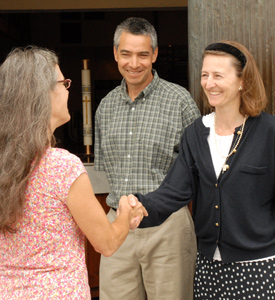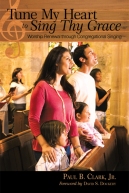 I have a favorite saying when I am in my music leader/director mode, and it is simply this, “Music is drama!” Sometimes when church choirs have worked hard to master notes, rhythms, vocal technique, blend and balance, they forget the dramatic impact intended by the use of music. Thus my little saying. I sometimes follow it with a reminder that if the words were enough on their own we might just speak the message. All this is an attempt to prompt singers and players to connect to the drama of a song and its music. For music to express something, there is drama. The most fundamental aspects of the musical art, like tension and release, discord and consonance, suspension and resolution, soft and loud, rhythmic synchronization, and effective melodic line, all serve to highlight the drama that is music. This is all strong reason as to why music is such an effective tool in expressing the marvels of the Gospel. Like music itself, the Gospel message is characterized by drastic shift from discontinuity to resolution. Jesus has given to His disciples (us) the ministry of reconciliation.
I have a favorite saying when I am in my music leader/director mode, and it is simply this, “Music is drama!” Sometimes when church choirs have worked hard to master notes, rhythms, vocal technique, blend and balance, they forget the dramatic impact intended by the use of music. Thus my little saying. I sometimes follow it with a reminder that if the words were enough on their own we might just speak the message. All this is an attempt to prompt singers and players to connect to the drama of a song and its music. For music to express something, there is drama. The most fundamental aspects of the musical art, like tension and release, discord and consonance, suspension and resolution, soft and loud, rhythmic synchronization, and effective melodic line, all serve to highlight the drama that is music. This is all strong reason as to why music is such an effective tool in expressing the marvels of the Gospel. Like music itself, the Gospel message is characterized by drastic shift from discontinuity to resolution. Jesus has given to His disciples (us) the ministry of reconciliation.
Sunday evening I was able to slip in for our church’s Palm Sunday musical presentation that was titled, “Into the Darkness.” The theme helped to mark the beginning of Holy Week, although the musical service itself embraced many aspects of the whole story, including reflections on the cross, the resolution brought about by resurrection power, and even the anticipation of the Lord’s return. In fact, an emotional highlight, no doubt, was the final stanza of the last hymn sung in the service, Horatio Spafford’s It Is Well with My Soul, as we sang our heart’s desire,
And Lord, haste the day when our faith shall be made sight!
The clouds be rolled back as a scroll.
The trump shall resound, and the Lord shall descend
Even so, it is well with my soul.
This hymn seems to always pack a powerful punch for worshiping communities, but perhaps never more so than following a lengthy contemplation of the depth of human sin, the desperation of the human condition, and reflection on the cost of our salvation. In a service where each song is followed by the extinguishing of another candle there is a growing sense of that darkness, as well as a deepening hunger for light, for resolution. The hymn provides some sense of build up within its own verses, when “sea billows roll,” “Satan buffets,” and “my sin” provides the very need for Christ to regard my “helpless estate,” and to shed His own blood. This service of worship, however, went beyond the four verses of the hymn, drawing our penitence into focus over most of the service. Certainly beautiful music permeated the whole service, but without morbidity a strong sense of our need for salvation set the tone of much of the service, adding to the welcoming thought of our Lord’s return as sung by congregation in It Is Well.
I recall one of my first Tenebrae services that I led when serving as Music Minister. Most of that service was predominated by minor keys, and participants departed the dimly lit sanctuary in silence. I received complaint notes from a few church members. For a long time I kept one note scribbled on a bulletin that simply said, “I do not come to church to feel bad.” I guess the wait between that Good Friday service and the coming Resurrection Sunday was more delayed gratification than some were prepared to accept. We Baptists are less conditioned to such expectations than some of our more formal liturgy friends. Regardless, the season of Lent and Easter provides grand opportunity for worship to profoundly proclaim its central feature, the Gospel. Placing the truth of this gospel on the lips of worshipers provides opportunity for powerful worship that not only proclaims this good news to all who hear and expresses praise to the One we worship, but it also helps to form those worshipers into Gospel people. Effective corporate worship singing aids our fulfillments of Christian living, loving God, loving people, going and telling this good news in the power of the Christ Who is with us always. Sing the drama!




